Walk through an old Japanese town or gaze up at the roof of a shrine, and you may spot elegant symbols—circles, flowers, leaves—gracing the architecture or adorning traditional garments.
These motifs, known as kamon (family crests), appear in a wide array of places: on shrine rooftops, gravestones, the backs of formal kimono, and the curtains (noren) of long-established shops.
Far more than simple decoration, kamon are unique emblems that symbolize a family’s lineage and heritage in Japan.
In today’s world, many Japanese people live their lives without knowing their own family crest. Yet since the Edo period, crests have been used not only by samurai, but also by merchants, townspeople, and farmers.
Handed down through generations, these designs are imbued with family pride, aspirations, and the weight of history.
Origins and Spread of Kamon
The origin of kamon dates back to the late Heian period.
What began as decorative motifs for ox-drawn carriages and furnishings used by aristocrats eventually made their way into the world of the samurai. There, crests evolved into battlefield identifiers—hatajirushi, or banner symbols—used to distinguish friend from foe. Kamon were emblazoned on flags, armor, helmets, and standards, serving not only as practical tools of recognition, but also as marks of loyalty and noble blood.
These early crests were not ornamental; they were essential symbols of identity and allegiance.
When peace took hold during the Edo period, the use of kamon expanded beyond the warrior class. Commoners began adopting family crests, and their purpose gradually shifted from martial identification to representing social status and family heritage.
Crests became a familiar part of ceremonial life, appearing on formal kimono and hakama during weddings, funerals, and other important occasions. In this way, kamon became an enduring symbol of household dignity.
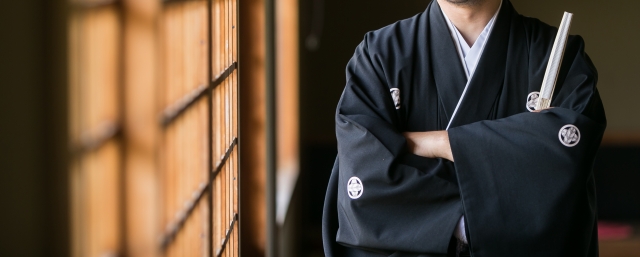
Traditional formal men’s kimono outfit with family crests
Famous Crests and Their Meanings
There are said to be over 20,000 types of kamon in existence today.
These designs incorporate flowers, plants, animals, tools, and geometric shapes—often highly stylized yet rich in symbolism.
Each crest expresses the values, ideals, and wishes of the family it represents, and in many cases, it serves as a visual echo of generations past.
Aoi (Hollyhock)
The hollyhock has long been regarded as a sacred plant in Japan.
It is the emblem of Kyoto’s two ancient Kamo shrines—Kamigamo and Shimogamo—which were closely tied to the imperial court and revered by nobility.
The most famous hollyhock crest is the Mitsuba Aoi (“Triple Hollyhock”), used by the Tokugawa clan. Three hollyhock leaves arranged in a circular pattern, the design became synonymous with the Tokugawa shogunate and remains in use today by the clan’s descendants.
The crest also appears at Nikkō Tōshōgū Shrine in Tochigi Prefecture and Zōjō-ji Temple in Tokyo, underscoring its enduring role as a symbol of Tokugawa power and legacy.
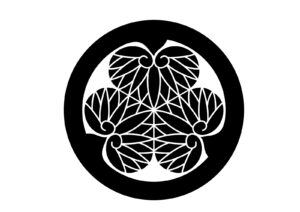
The triple hollyhock crest, famously used by the Tokugawa clan
Kiri (Paulownia)
The paulownia tree, known for its rapid growth and large, elegant blossoms, has long symbolized abundance and prosperity.
Originally reserved for the imperial family, the crest was later granted to individuals and families of high status and accomplishment.
Among its various forms, the Gosan-no-kiri (“Five and Three Paulownia”), used by Toyotomi Hideyoshi, is especially famous.
Featuring five central flowers and three on each side, the crest came to be recognized as a symbol of supreme authority.
Today, the Goshichi-no-kiri (“Five and Seven Paulownia”) is used as the official emblem of the Japanese government, carrying on the paulownia’s long tradition as a symbol of national prestige and power.
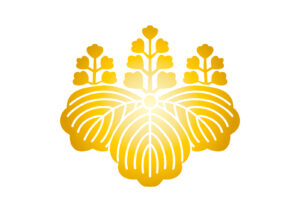
The ‘Go-Shichi no Kiri’ (Paulownia with 5-7 flower arrangement) is the official emblem of the Government of Japan.
Mokkō (Wood Sorrel or Gourd Flower)
Mokkō is one of the oldest crest designs in Japan.
Its origins are debated—some say it depicts the cross-section of a gourd, others believe it represents a bird’s nest. Either way, it has long been regarded as a symbol of fertility, happiness, and family prosperity.
While the standard mokkō crest features four petals, the Oda Mokkō—used by warlord Oda Nobunaga—is notable for its unique five-petal design.
Once limited to court nobility, mokkō became widespread among the general population as kamon gained popularity. Today, it is considered one of Japan’s five great family crests.
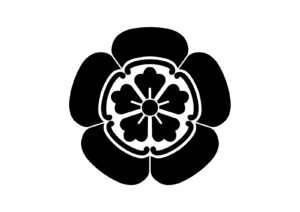
The Oda Mokko crest, characterized by its five-petal design
Fuji (Wisteria)
With its cascading blossoms and graceful form, the wisteria plant has long been cherished in Japan’s aesthetic tradition.
Loved by the aristocracy during the Heian period, wisteria came to symbolize elegance, longevity, and prosperity.
The way its vines gently trail downward also imbues the crest with meanings of family continuity and domestic stability.
The wisteria crest is most famously associated with the Fujiwara clan, one of the most powerful families of the Heian era.
Bearing the name “Fuji” and a wisteria emblem, their influence spread throughout court society. Over time, the crest came to be viewed as a mark of refinement and noble lineage.
As the centuries passed, wisteria crests spread to samurai and commoners alike, developing numerous variations based on the arrangement of flowers, branches, and leaves. With its flowing curves and understated strength, the fuji mon continues to be loved for both its beauty and meaning.
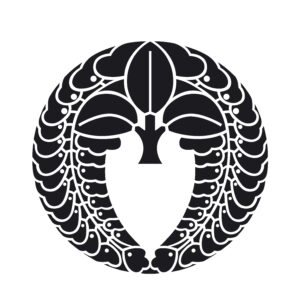
The Fuji-mon (wisteria crest) is a traditional Japanese family emblem admired for its graceful curves and refined beauty.
Taka no Ha (Hawk Feathers)
Few crests exude as much strength and spirit as the Taka no Ha—stylized hawk feathers with sharp, dynamic lines.
The hawk, long admired as the “king of birds,” represents sharp vision, agility, and the ability to strike with precision. It became a favorite symbol among warriors, embodying ideals of strength, courage, and success in battle.
Hawks were prized for falconry among both aristocrats and samurai, and their feathers became popular crest motifs during the Sengoku and Edo periods.
Designs usually feature one to three feathers, arranged in balanced symmetry. Though simple, the shape conveys elegance, intensity, and an unspoken wish for victory and honor.
Even today, the Taka no Ha crest maintains a bold presence. It is sometimes adopted in martial arts or sports as a symbol of pride, discipline, and unwavering strength.
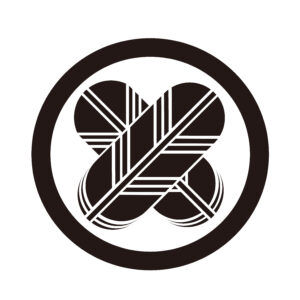
The Taka-no-Ha mon (Hawk Feather crest) is a traditional Japanese family emblem known for its numerous design variations — differing in the number, shape, and angle of feathers. It symbolizes strength, keen vision, and nobility.
A Living Symbol
Kamons are not mere relics of the past—they are living symbols that continue to convey the spirit of Japanese culture and tradition.
Each crest carries the story of a family’s roots, their values, and the lives of those who came before.
Though many people today may not know their own kamon, these emblems are still found in temples, shrines, traditional crafts, and ceremonial clothing, woven into the daily and spiritual life of Japan.
To learn one’s family crest is to rediscover one’s origins. It opens a path to understanding heritage, history, and the quiet strength carried across time.
No matter how much the world may change, the kamon remains—a silent, elegant testament to pride, ancestry, and the enduring beauty of tradition.
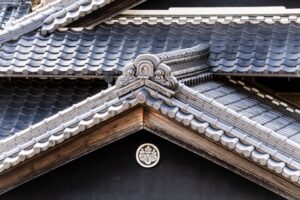

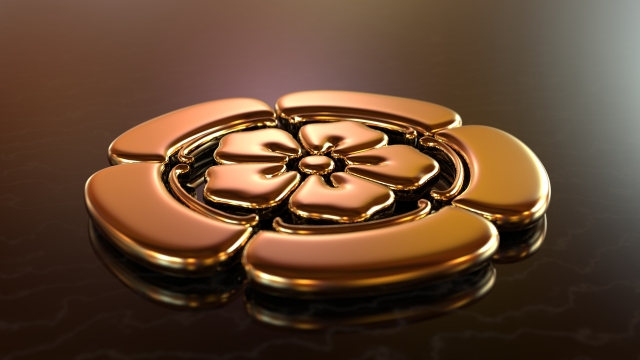


コメント